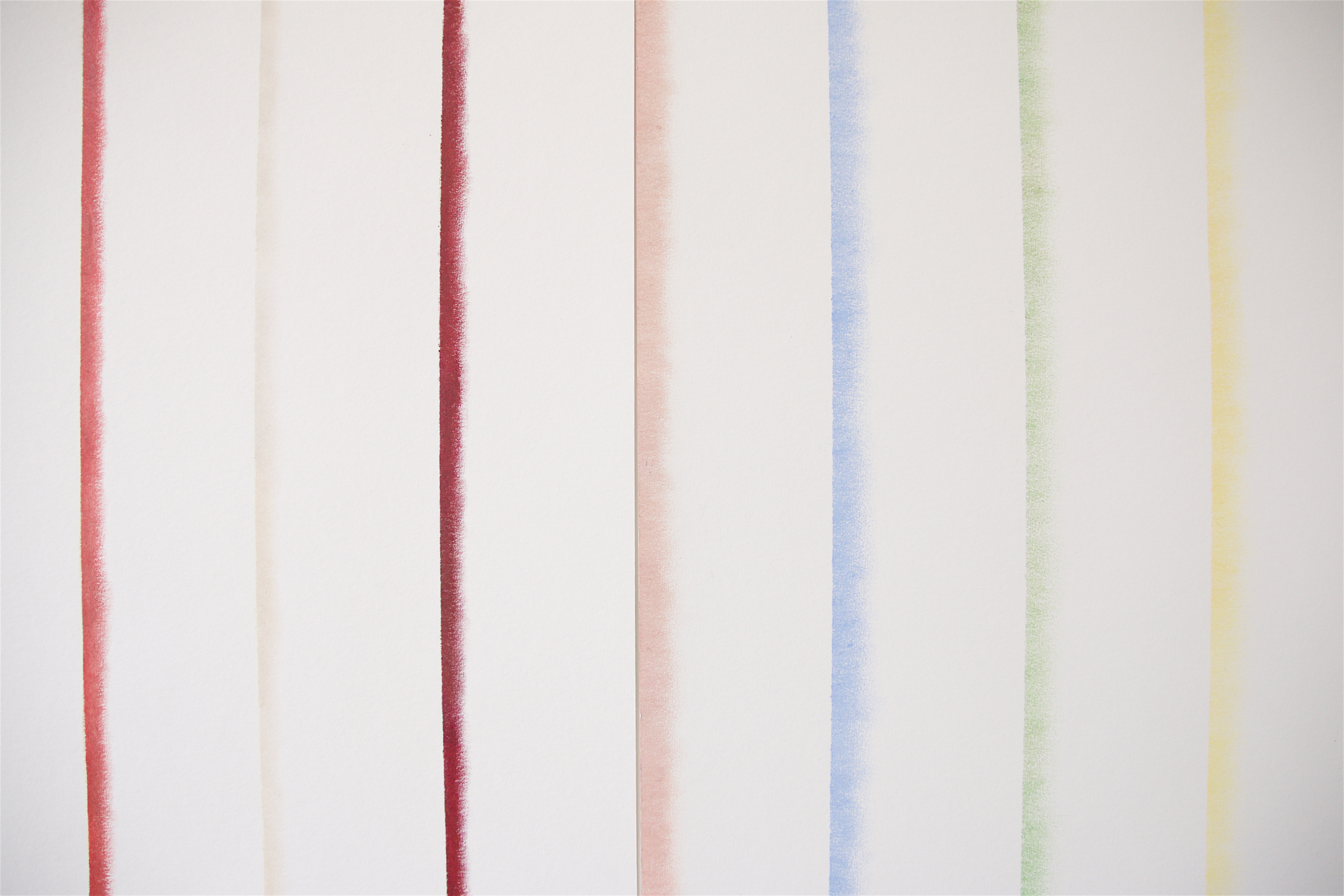Crosswork VII
(The Beginnings)


August 2023
300 gsm paper; oil pastel
Size 35 x 50 cm
This work is part of The Crossworks, an ongoing series of projects that have emerged from each other since 2021. The works have no definitive state nor form; they are always in transition. The interrelationship of color, matter, light and space is explored in this series. They are based on the fresco cycle “The History of the True Cross” by Piero della Francesca (± 1460; Arezzo, Italy).
Crosswork VII was born out of a desire to make work simpler and lighter, without sacrificing power and complexity. For me, a minimal visual language is not created by teasing out a work, but by treating simplicity as a promiseful beginning.
This work is based on the form and colour from Crosswork I. Crucial in this is the choice of materials for the oil pastels, with which the hundreds of different colours were mixed. This search for the right colour is visible in the subtle colour nuances when viewed up close.
The simple vertical lines, when seen from afar, transform into a pattern of short horizontal strokes rubbed with the thumb as the viewer approaches. The traces of the action are tangible in the work and create an entirely different (physical) connection with the viewer. In this, lines are not lines but an impetus for a plane. The variable nature of the sheets allows one to respond to the surrounding space and situation, and no two installations will ever be the same.